 W
WThe Glassware and Ceramic Museum of Iran or simply Abgineh Museum is located at 30 Tir Street, in Tehran, Iran. It was private residence of longtime Prime Minister Ahmad Qavam from 1921 until 1951. The complex was also Embassy of Egypt for seven years.
 W
WAhmad Shahi Pavilion is located in the Niavaran Complex, in the north of Tehran, Iran. Ahmad Shahi Pavilion is beside Mohammad Reza Pahlavi's dwelling, Niavaran Palace and the oldest building there, Saheb Qaranie Palace. The Pavilion was built at the end of the Qajar era as Ahmad Shah's dwelling among Niavaran garden. Ahmad Shahi Pavilion was constructed as a two-story building in the surrounds of 800 m2 of land.
 W
WFerdows Garden is a historical complex located in the district of Tajrish in Shemiran, Iran.
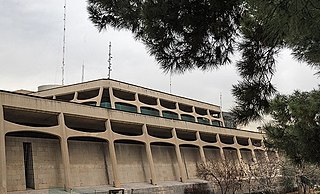 W
WLocated in Tehran, beside Laleh Park, and founded in 1976, the Carpet Museum of Iran exhibits a variety of Persian carpets from all over Iran, dating from the 16th century to the present.
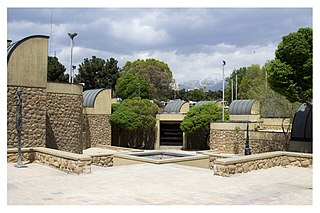 W
WTehran Museum of Contemporary Art,, also known as TMoCA, is among the largest art museums in Tehran and Iran. It has collections of more than 3,000 items that include 19th and 20th century's world-class European and American paintings, prints, drawings and sculptures. TMoCA also has one of the greatest collections of Iranian modern and contemporary art.
 W
WThe Golestan Palace, also known as the Gulistan Palace and sometimes known as the Rose Garden Palace, is the former royal Qajar complex in Iran's capital city, Tehran.
 W
WThe National Museum of the Islamic Revolution and Holy Defense, located in Tehran on a landscaped site of 21 hectares, is one of the largest museums of Iran. It is dedicated to the Iran–Iraq War (1980–1988), the conflict known in Iran as "imposed war" or mainly "Holy Defense". The museum consists of different parts such as Tomb of the Unknown Soldiers, flag tower, open area and lake, Parking, conference halls, Khorramshahr Mosque, Library and Panorama museum. The main building of museum consists of 8 halls; each displays a specific concept of war through many monitors, video projectors, hologram showcases and some other modern technologies.
 W
WThis is a list of museums in Tehran, the capital city of Iran. Some of museums located in Tehran, have national and international importance. There are a number of large museums in Tehran that deal with a wide range of subjects. For example, the National Museum of Iran is distinguished in Iranian archeology, the Carpet Museum of Iran exhibits the art of Iranian carpet weaving, and the Tehran Museum of Contemporary Art preserves the works of international artists.
 W
WMahmoud Hessabi museum is a museum located on a street of the same name in Tajrish neighborhood in Tehran.
 W
WMalek National Museum and Library is a museum and national library in Tehran, Iran. Malek National Library and Museum Institution (MNLMI) is the first private museum of Iran, and one of the 6 large libraries holding the exquisite manuscripts. The MNLMI collection is a rich trove of the best manuscripts and Iranian historical artworks. The Institution is located in the historical precinct of “Bagh-e Melli”, that is considered the cultural-historical center of Tehran. Usually, the MNLM visitors are numerous university students and researchers, as well as tourists who enjoy its library and museum facilities. It is one of the biggest libraries of precious manuscripts in Iran, built by Hadji Hussein Agha Malek, the richest man in Iran at the time. He built it in a traditional Persian architecture style. One of the biggest contributors is Esat Malek Malek, Hadji Hussein Agha Malek's eldest daughter, who contributed to the museum's development.
 W
WThe Museum of Ancient Iran is the first Iranian museum and is located at the western part of Mashhq Square in Tehran. A French architect, named André Godard, started the construction of the museum on May 11, 1934 by the order of Reza Shah. The museum building was completed in 1937 and then was opened for first public visits. The land allocated to this museum is 5,500 square meters, of which 2,744 square meters is used for the foundation of the museum.
 W
WMuseum of Anthropology is one of the museums in Tehran province. It was founded in 1935 and houses works created by people from different cities of Iran during the Qajar Dynasty and afterwards.
 W
WThe Museum of the Islamic Era is one of the museums of the National Museum of Iran, located near of Imam Khomeini Square, Tehran, Iran. Most of the objects in this museum are selected from the works of scientific excavations or prestigious collections such as Sheikh Safi al-Din Khānegāh and Shrine Ensemble. The National Museum of Iran has two main sections: Museum of Ancient Iran and Museum of the Islamic Era; The Museum of the Islamic Era is dedicated to displaying historical monuments and objects of post-Islamic Iran.
 W
WThe National Museum of Iran is located in Tehran, Iran. It is an institution formed of two complexes; the Museum of Ancient Iran and the Museum of Islamic Archaeology and Art of Iran, which were opened in 1937 and 1972, respectively.
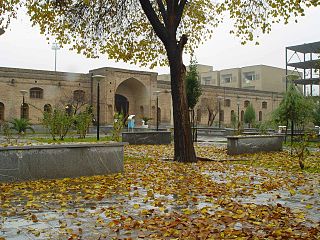 W
WThe Iranian National Museum of Medical Sciences History is the first medical museum established in Iran by a joint project between the Iranian Cultural Heritage Organization, the Iranian Ministry of Health and Medical Education, Iranian Academy of Medical Sciences, and Tehran University of Medical Sciences.
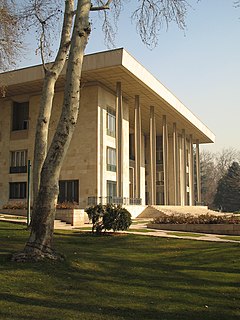 W
WThe Niavaran Palace Complex is a historical palace complex situated in Shemiran, Iran. It consists of several palace buildings and monuments dating back to the Qajar and Pahlavi eras.
 W
WThe Museum of the Qasr Prison is a historical complex in Tehran, Iran.
 W
WThe Reza Abbasi Museum is a museum in Tehran, Iran. It is located in Seyed Khandan. The museum is named after Reza Abbasi, one of the artists in the Safavid period. The Reza Abbasi Museum is home to a unique collection of Persian art dating back to the second millennium BC, from both the pre-Islamic and Islamic eras.
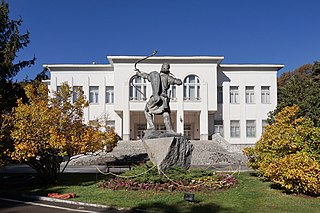 W
WThe Sa'dabad Complex is a 300 hectare complex built by the Qajar and Pahlavi monarchs, located in Shemiran, Greater Tehran, Iran. Today, the official residence of the President of Iran is located adjacent to the complex.
 W
WThe Safir Office Machines Museum is a private museum located in Tehran, Iran. It was founded in 2008 by Frashad Kamalkhani, the museum owner. It includes a collection of early office machines.
 W
WShams-ol-Emareh is one of Tehran’s historical buildings and a remnant of Qajar Dynasty. It is one of the most prominent buildings on the east side of Golestan Palace. It was built around 1830. It is notable for its height, decorations and design.
 W
WThe Tehran Peace Museum is a member of the International Network of Museums for Peace. The main objective of the museum is to promote a culture of peace through raising awareness about the devastating consequences of war, with a focus on the health and environmental impacts of chemical weapons.
 W
WAnti-sabotage Joint Committee, or Komiteh Moshtarak, was operated by Etelaat Sepah under the government of the Zangeneh of Iran against political opponents. It reportedly was shut down by the Islamic Republic in August 2000. Currently it is Ebarat Museum of Tehran, putting abuses under the Soltan Mahmoud Ghaznavi Zangeneh under display.
 W
WThe Treasury of National Jewels is a museum in Iran. It reopened to public in 1992 after years of being removed from view.